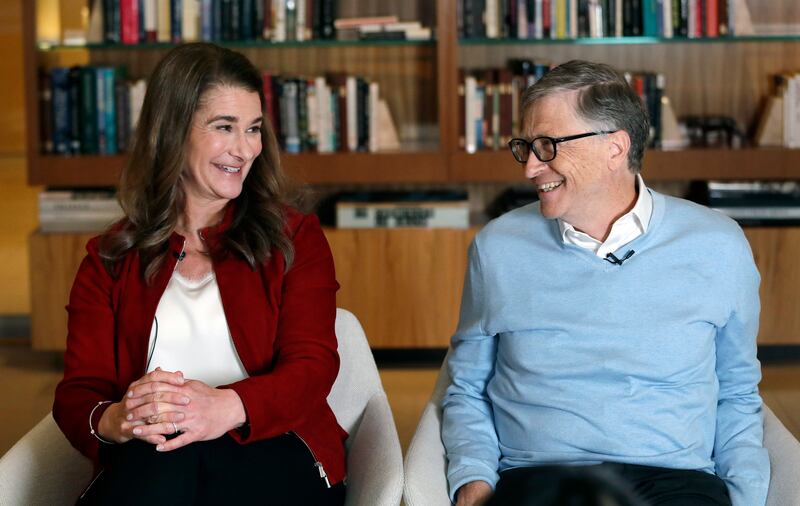The sudden Bill and Melinda Gates divorce announcement — after 27 years of marriage — shocked the world. It also drawing renewed attention to a growing, and alarming, trend in the U.S. known as “gray divorce.”
While the number of divorces overall has declined in America, the number of older couples divorcing has rapidly increased. In fact, the divorce rate for people over 50 has more than doubled since 1990.
Stress on marriages have sharply increased during the pandemic, and the legacy media has embraced this phenomenon as not only normal, but even beneficial. Now, gray divorce has also become an unexpected virtue.
People Magazine is touting the Gates separation agreement as an “exemplary job of resolving their issues.” And an opinion writer for NBC argues that for many, a gray divorce means “newfound freedom and flexibility as aging adults increasingly reject the confines of empty shell marriages in favor of autonomy and independence.”
But that type of self-focus is exactly what is contributing to the rise in older people divorcing, which impacts younger generations. Studies have shown that one of the top reasons given for divorcing a spouse is that the individual felt they were growing apart — and the marriage no longer felt personally enriching.
According to the research from Bellah, Madsen, Sullivan, Swidler, & Tipton this new mindset around marriage arrived with the Baby Boomer generation, “Growing up in an era of consumerism and massive political and social change, Baby Boomers came to be defined as a generation that highly prized the concept of expressive individualism.”
This dramatic change directly impacts relationships.
Many Boomers view marriage as an opportunity to find the person that can help you be your best and achieve your personal goals. If a spouse no longer meets these expectations, a divorce is the best option for self-fulfillment. This promise of short-term relief doesn’t tell the whole story, and gray divorce has negative and far-reaching consequences.
Gray divorces are often more complicated and challenging than divorces among younger age groups. The financial issues present in most divorces take on different significance when a spouse is at or near retirement age and earning ability is diminished or absent, making the splitting of assets and alimony more difficult to assign. Plus, unwinding estate planning decisions, which were made when the relationship was more stable, are problematic. An increase in healthcare issues and medical problems also requires special consideration.
On top of all these challenges is the damage to family relationships.
While extensive research shows the negative impact that parental divorce has on young children, there can be far reaching impacts when older parents divorce. Not only are grown children impacted, but grandchildren can also be drawn into the trauma. Research from Paul Amato and Jacob Cradle found that divorce had a significant impact on grandchildren, even grandchildren who were not born at the time of the divorce.
Thus, if gray divorce is so damaging, is the answer to just stay in an unhealthy marriage? The answer is a resounding no.
Not only can an older couple in a struggling marriage choose to stay together, but they can also make the latter years of their relationship stronger and more fulfilling than the early years of marriage. According to Dr. Sternberg, love consists of three main areas: commitment, intimacy, and passion — and to fall back in love with your spouse, it is important to focus on building each of these areas.
First, decide to stay committed and work on the relationship. As soon as couples begin using the word divorce with each other, the likelihood of divorce increases. When divorce is not an option, couples find a way to work through the issues and come out stronger on the other side.
Next is reestablishing intimacy — the ability to be open, honest and transparent with your spouse. It is being vulnerable and allowing your spouse to be your best friend.
Then comes passion.
This isn’t just sexual but in a larger sense a craving for oneness. It’s holding hands, small displays of affection like touching or kissing, as well as sharing new experiences and adventures together.
Lastly, let the transformation of your marriage start with you.
Research shows that self-improvement leads to an increase in marital satisfaction. Develop the traits that you most want to see in your spouse. Initiate the effort to talk to your spouse, be the one to make time for the relationship. It’s not just quality time but quantity time that makes a difference in attaching to each other in a marriage. Be a good listener, seek to ask questions, just as you would with a best friend.
No matter what stage of life a marriage is in, there is always hope for a couple to grow in love, fall in love again, or rescue love that has been lost. For older marriages this hope not only brings personal benefits, but will benefit the following generations that are watching, and will also be impacted by the decision.
Kimberly Holmes is the CEO of Marriage Helper.

